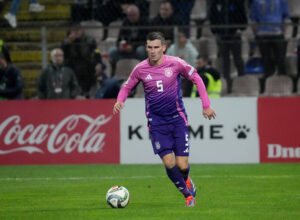The FIFA Council has unanimously approved the expansion of the World Cup to 48 teams. Beginning in 2026, the FIFA World Cup will feature 16 groups of three teams competing for global soccer supremacy.
The FIFA Council unanimously decided on a 48-team #WorldCup as of 2026:
16 groups of 3 teams. Details to follow after the meeting.— FIFA Media (@fifamedia) January 10, 2017
FIFA Council Unanimously Approves World Cup Expansion to 48 Teams
The group stage would comprise of two matches per team with the top two teams advancing to a 32 team knockout round.
The FIFA Council was asked to vote on four possible formats for the 2026 tournament. Also on the table was retaining the current 32 team format that has been in use since 1998; a more modest expansion to only 40 teams; and a 48 team format that would have seen 16 teams eliminated after only playing one match.
Gianni Infantino, the FIFA President, made expansion of the World Cup one of his biggest priorities during his campaign to be elected FIFA president. His promise to include more places in the finals for Asia and Africa helped secure a lot of votes from those continents. The confederations will learn how the 48 slots will be distributed in May.
Money the Motivating Factor
The council was no doubt attracted to the potential extra $1 billion in revenue this new format expects to bring in. Gianni Infantino and his colleagues will claim they are motivated by the opportunity to grow the game in smaller countries and extend the joy of playing in the World Cup to new nations. It’s clear that the opportunity to get more money television rights fees for more games with more nations involved cannot be discounted as a big motivating factor.
While there will be more matches overall, the tournament won’t actually get much longer. The champions and runners up will still only play in seven total games and the overall length of the tournament won’t increase. There is also the allure of each of the 80 total matches being played in its own time slot. Under the current rules, the final matchday of the group stage takes place with two matches going on simultaneously.
Diluted Competition
There is a down side to this expansion. Many large nations cited the dilution of competition in the early stages of the tournament. While the chance exists for a Cinderella team similar to Iceland in the 2016 European Championships to arise, there will however be potential for more “blowouts” when the stronger teams take the field.
The other drawback will be the extra effort required to host the World Cup. Host nations will now need the infrastructure to handle the players and fans of an extra 16 countries. While 12 stadiums will still be the primary requirement, the host nation will need more hotels and entertainment capacity for thousands upon thousands of new fans.
This will limit the amount of nations capable of hosting the World Cup and possibly lead to more joint hosting bids. While the bidding process for the 2026 tournament is yet to begin, there has been plenty of talk of a joint bid between the United States, Canada, and Mexico. This multiple nation hosting plan, which has been used once in the 2002 World Cup hosted by South Korea and Japan, very well could become the norm.
The bidding process for the 2026 World Cup is expected to begin soon.
Main Photo






